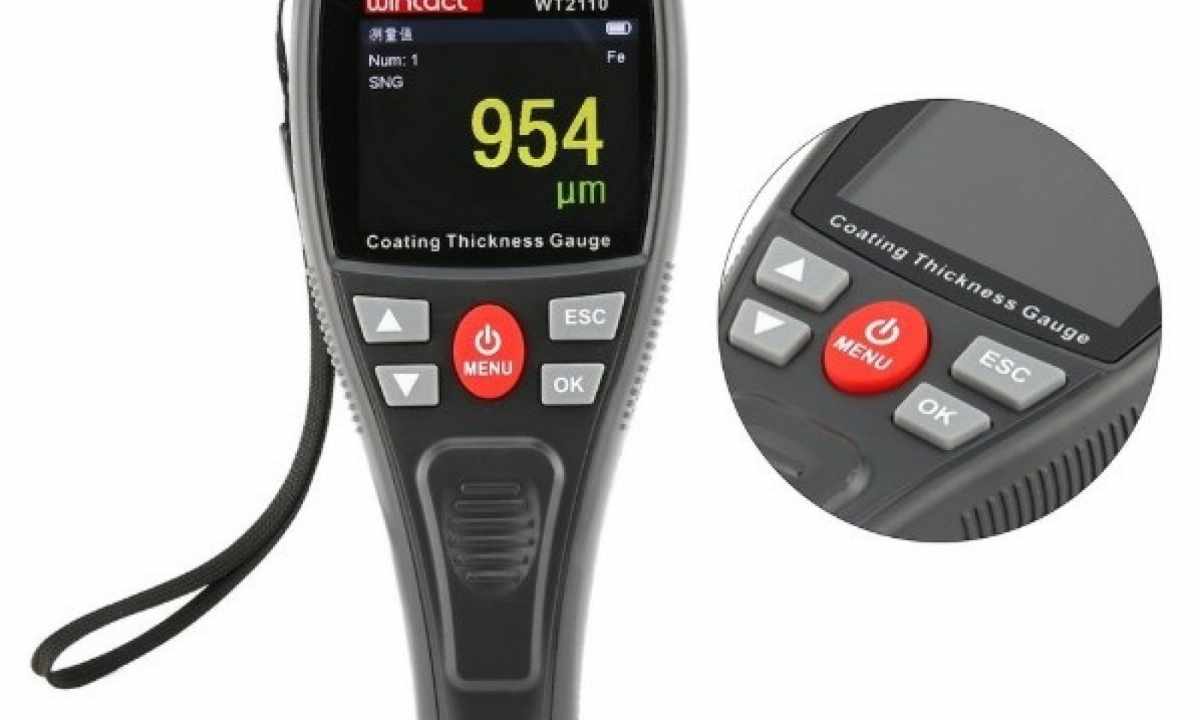Toshchinomer allows to define condition of paint coat at construction or performance of repair work with use of nondestructive method. It can be used also for assessment of water communications and gas pipe-lines.
The thickness meter – the device allowing to calculate quickly thickness of paint coat. It has gained the greatest popularity among people who professionally are engaged in purchase or sale of used cars. By means of the thickness meter it is possible to obtain real information on condition of car: to reveal corrosive sites, zones with putty layer.
At repair and construction it is used for determination of thickness of the applied material incorporating fire-prevention, anticorrosive and other types of the components applied during creation of structures of buildings. For such purposes household types are used. Unlike automobile, they can measure covering practically from any material, including:
- paint coat;
- primer type;
- rust layers;
- plastic coverings;
- ceramic and others.
The only condition – covering has to have dielectric properties, have smooth outer surface.
Types of the thickness meter
The simplest is the magnetic measuring instrument. In its body there is magnet which defines attraction degree to metal. On the screen the result is highlighted: the magnet is closer to the basis, the attraction will be stronger. Today this type is applied seldom.
Ultrasonic assume availability of the sensor in the probe which sends impulse through covering. It is displayed from surface, will be transformed by the sensor to high-frequency electric signal. The echo is digitized, analyzed for determination of coating thickness. The error averages 3%. This look is relevant for situations when there is access only to one party of surface of product. This option is one of the most effective and universal.
Vortex-current are suitable for measurement of nonconducting coverings. On the surface of the probe of the device the variation magnetic field is generated. At approach to conducting surface the field generates in it eddy currents. They create own electromagnetic fields which can be measured. Such version is used for studying the surfaces made of non-ferrous metals.
One more version – capacity. It is applied to works with the non-magnetic carrying-out materials. The sensor is one condenser coating, and the studied surface becomes the second. Between them there is LPK layer. At measurement of thickness of layer also capacity changes. This approach is not really popular as it is sensitive to moisture, is difficult in the address during the work with curvilinear surfaces.
What to choose the paint thickness meter?
At selection of the device for household use it is necessary to pay attention to several options:
- The ultrasonic look is considered the most expensive. It is used mainly by professionals.
- Magnetic types have least of all functions therefore can be applied only when determining thickness of paint of cars.
- Everything, except magnetic version, have the sufficient level of accuracy.
- The combined electrovortex type comes out on top in this parameter.
It is the most convenient to use the thickness meter with the display as in this case it is possible to receive exact data. On sale it is possible to meet trigger and press devices. The second have more ergonomic design, are suitable for inspection of any zones because of the small area of contact surface.
It is necessary to choose the device with self-calibration. In this case factory settings are enough for long time. Also units in which the result is given are studied. Optimum, if data can be obtained both in micrometers, and in microinches.
How to use?
If the device for measurement of thickness of paint is only bought, it is necessary to check settings. Sometimes they are brought down. The correctness of results is verified with standard from the producer. Usually it is delivered in set.
Turn on the device, but do not allow contact of the sensor with surface which will be investigated. If it has occurred, it is necessary to calibrate the device again. Adjust devices on thickness of the measured covering. Certain values are often already installed in devices, but wide range leads to reduction of accuracy of the received result. At installation of the upper bound make stock on 100-200 microns.
Put the sensor to the studied surface, press the start-up button. It is necessary to wait for the received result. If in the thickness meter there is no memory function, then it is the best of all to write down result. It is necessary to do measurements in different places. If thickness of paint coat is beyond admissible range, it is recommended to increase quantity of points of measurement.
Carrying out calibration
For this purpose it is necessary to prepare metal and plastic plate. If the device works only with ferrous metals, then steel ferromagnetic material is used. The studied surfaces have to be clean and smooth.
For calibration turn on the device, make dumping of the program before factory settings. In the majority of devices the test measurement of metal for this purpose becomes then the 0 key is pressed. During test measurement it is possible to see error level. If it is equal to zero, calibration is not necessary.
At other results it is necessary to impose plastic standard on metal and to carry out measurements. Press key of the mode of calibration and by means of special buttons level value in compliance with reference.

